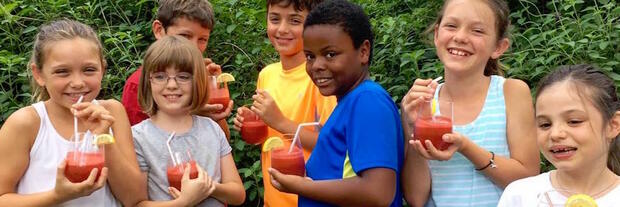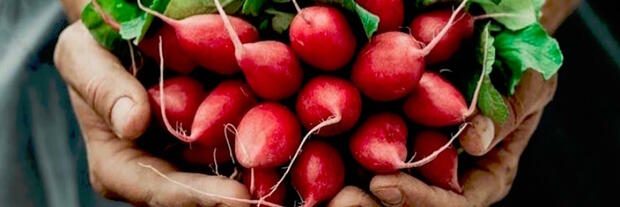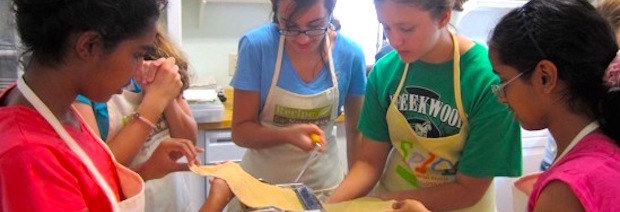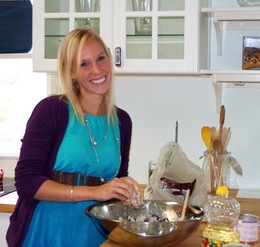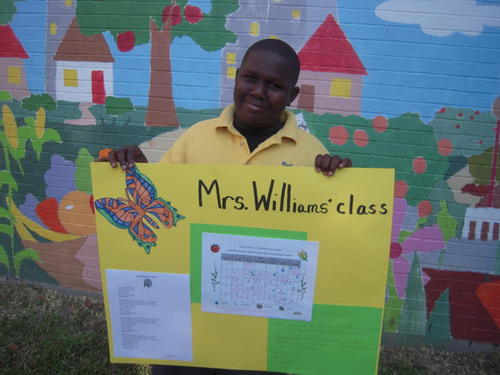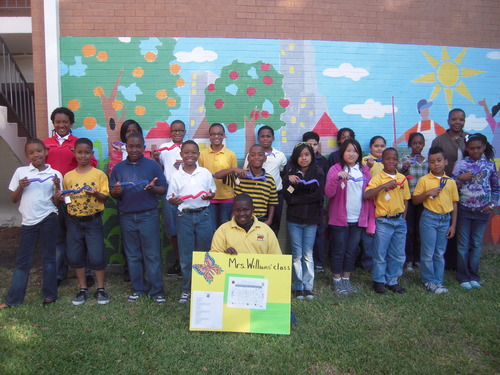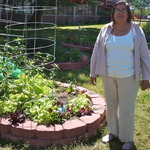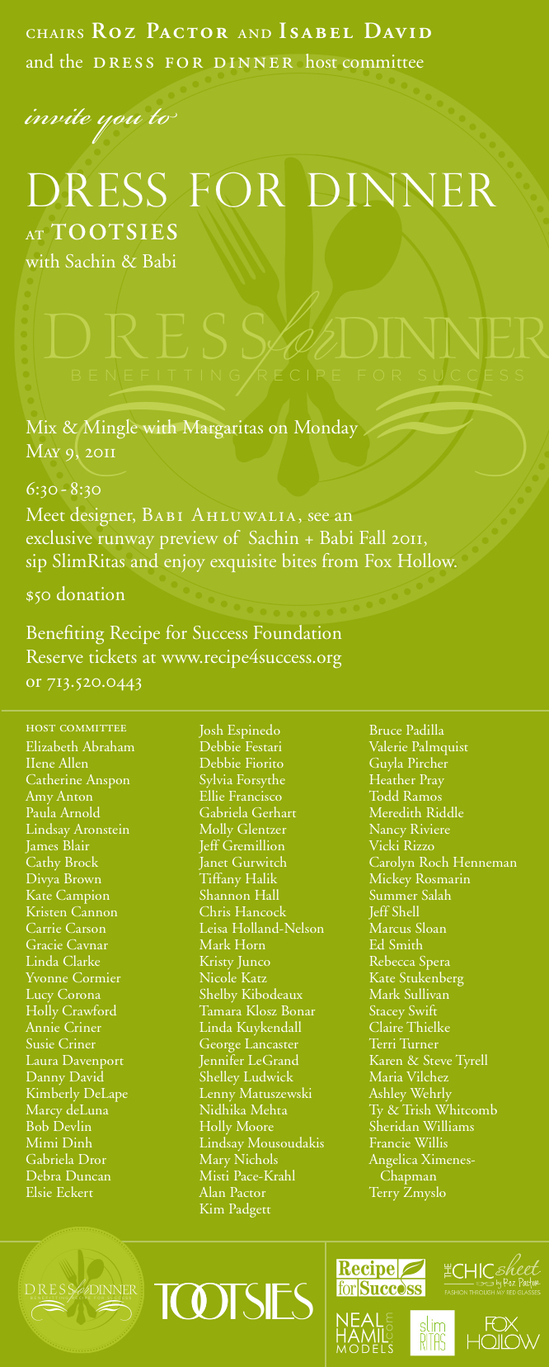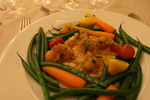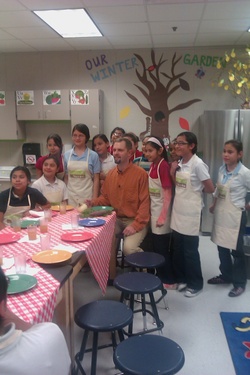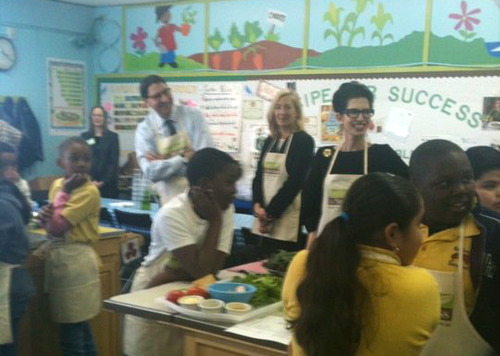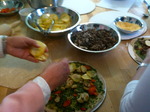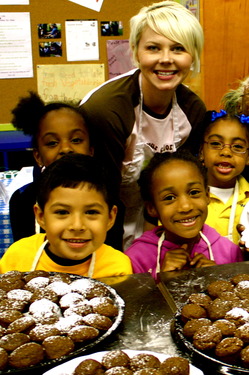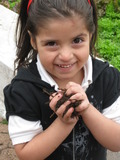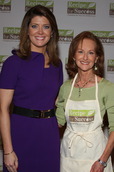The President has declared that September is
National Childhood Obesity Awareness Month. There is a lot to be aware of. Our kids are fat and getting fatter. Despite an increase in attention, advocacy, action and media spotlight directed at the problem and its attendant health risks, the needle hasn't budged in the last year or so. On the other hand, much really good work that has potential for long-term impact has been done. We all celebrated a recent triumph when Congress passed the
Healthy, Hunger-Free Kids Act of 2010, which made landmark changes to the school nutrition landscape. New rules and guidelines will effect 50 million kids. Nearly half of those kids--just shy of 20 million, qualify for free or reduced meals, which indicates that their primary source of food is at school, where they often eat both breakfast and lunch, Monday through Friday.

There was much hootin, hollerin, and high-fivin when the
President signed the bill into law last December. But let's not get ahead of ourselves. The devil is in the details.
The new law increases funding for school lunch by 6 cents a meal; supports and promotes school gardens and farm to school purchasing arrangements; and it expands eligibility for free lunch to more low-income kids. Most celebrated by activists was the shift from nutrition-based standards to food-based standards, which will help do away with much of the processed food masquerading as healthy because it has chemical additives for vitamins and minerals. This shift means that a sugar-steeped pop tart will no longer count as a serving of fruit and multi grain bread.
The other hammer handed to nutrition advocates is that these new rules will apply to all food available at any time on campus, including in vending machines or a la carte items offered for sale. Bottom line is that kids need to eat more freshly prepared or raw fruits and vegetables, and less salt, sugar and saturated fat found in their current diet of predominantly processed food. The USDA guidelines gave parents and nutrition advocates the tools to achieve needed changes.
Unfortunately, this bill could now go the way of many unfunded mandates before it--cut off at the knees by lack of money for implementation, monitoring or oversight. And we are in jeopardy of losing much of its potential power when rules are finalized in December 2013. Lobbyists are hard at work wearing down members of Congress, demanding change. The dairy lobby scored a major early victory with flavored milk appearing on the allowed list, even though it contains as much sugar by volume as a full-octane soft drink. They won by arguing, "Otherwise children wouldn't drink enough milk to get their needed minimum calcium." Now other food lobbyists are clamoring "me too" claiming important health benefits that fly in the face of all the science.
With balanced budget arguments ruling the Hill, the Congressional appropriations committee is taking another look at the whopping 6 cent per lunch reimbursement increase and the money to help schools refit their cafeteria kitchens, so that they can cook again. There is a rider to the agricultural spending bill circulating now that basically axes all the funding for proposals to improve nutritional quality of our kids school lunch.
For those who argue that the government should stay out of school lunch anyway, I would like to point out that it would never exist without Uncle Sam. Started in 1946 in response to the nutritional deficiencies of U.S. military recruits who were unfit to fight because they were starving to death, the post-war school lunch program soon became embroiled in serial struggles among food and drink companies, farmers, agribusiness, school administrators, and nutritionists over who could regulate what, where, and when. After-all, feeding 50 million school kids, 5 days a week, 9 months a year, is very, very big business.
In 1983, acting on a suit brought by the National Soft Drink Association, a panel of judges ruled that the USDA could regulate drinks only in public-school cafeterias, and only at mealtimes. As long as soft-drink and candy companies had the permission of local school boards and administrators, they could sell anything anytime or anyplace else. And of course local boards and administrators were vulnerable to the money waved around by food companies anxious to have access to all those young consumers. Funds for scoreboards and art programs assuaged any guilt. That kicked open the door to unprecedented promotion of junk food to kids who are especially vulnerable to sophisticated marketing techniques and away from their parents' rules. Pretty soon the junk bled out of the vending machines and into cafeterias as districts looked for ways to cut costs. Cafeteria kitchens slowly disappeared and fresh cooked lunches at school went the way of the dinosaur as big food got into the school lunch business with cut-heat-and-serve processed meals and promoted their fast food products to our kids. In the meantime,
our kids got fatter, suffered from ADD/AHD and their health and grades spiraled down in a double helix. Two things are happening when we present poor quality food to our kids at school: We are teaching them that junk food is OK to eat--a perception that will be nearly impossible to erase as they mature; and we are slowly killing them.
Circling back around to the genesis of school lunch, the US Military now complains that recruits are so overweight that it's a
threat to national security because they have to decline the 21% of available recruits who are too obese to fight.
So, our health, our future productivity, the viability of our health care system and even our national security is at stake. Reach out to your representative today. Tell him/her that we are paying attention. The nutritional quality of school lunch is too important to be sold to the highest bidder. Keep your hands off the Healthy, Hunger-Free Kids Act of 2010 and the USDA's proposed rules to support it.



